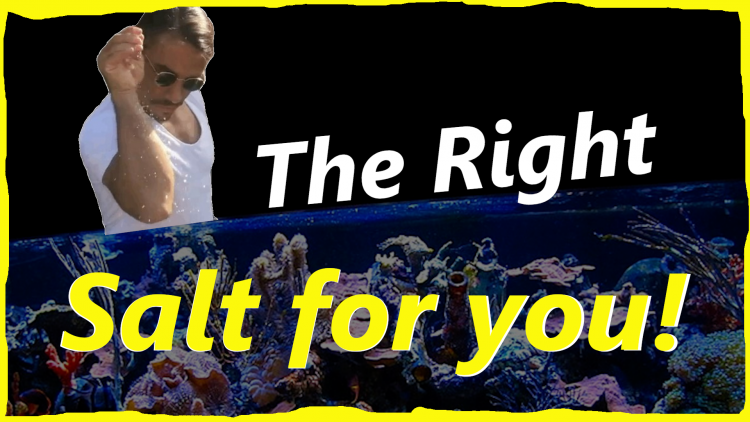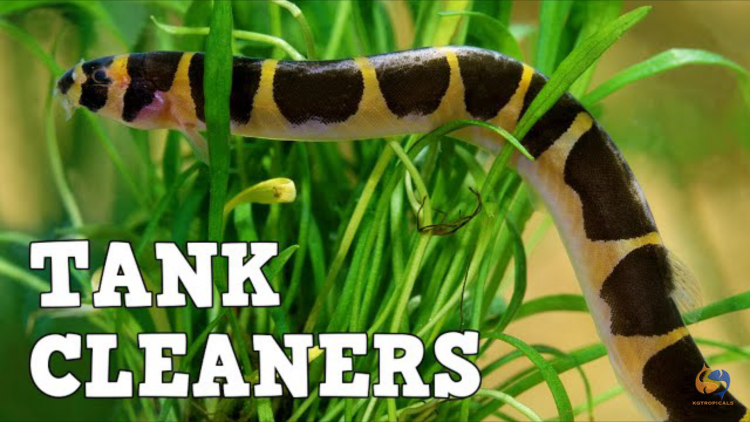The Best Salt to Use for Your Marine Aquarium
- Sep 06, 2019
- PalaciosAn
- 7221 0 1

What Salt Should I use in My Saltwater Aquarium?
A saltwater aquarium hobbyist can be successful with any salt that is made for marine aquarium use. Yet if you ask anyone in the aquarium hobby, everyone has a different opinion on what salt should be used to be successful, here are some things to consider when buying your marine salt.
The salt you choose should align with the style of maintenance you plan to perform on your tank and can vary between the different species in your tank. If you have a reef tank with coral, the water parameters in the water are essential, especially if you have stony corals like Large Polyp Stony (LPS) and Small Polyp Stony (SPS) corals.
If you have an SPS focused tank, the most significant success factor with SPS is consistency. Try to keep the core water parameters (Alkalinity, Calcium, and Magnesium) consistent. You do not want your Alkalinity and Calcium levels to swing up and down. Soft corals and even LPS corals are more forgiving to swings in water parameters. It's suggested to try to keep a reef tank with in the following range: Alkalinity between 8 - 11, Calcium between 380 - 420 and Magnesium between 1250 - 1400. Keep in mind that these are suggestions, but consistency is critical. You can be a little below or above the suggested range and still be successful. Choose an Alkalinity, Calcium, and Magnesium number and try to maintain it. Choose values that are easier for you to keep.
So you probably have heard this before many time, why does this matter when choosing the correct salt.
How does my maintenance schedule affect the salt I choose?
Each salt has different water parameters, some the type of maintenance you do with your tank matters. So how do you keep up with your water parameters? Do you do water changes, dose chemicals like two parts, kalkwasser in your ATO or do you have a calcium reactor?
So why does this matter or how does it affect the salt I use? The corals absorb the Alkalinity and Calcium in your tank. Over time which varies by the corals in the tank, they go down naturally. If you have only soft corals, the rate would be slower then if you have an SPS dominate tank. The big kicker here too with an SPS tank is that as your corals grow, they will absorb more.
Let's say you plan to change out 50% of my water in your tank for easy math. Your Alkalinity levels are currently 6 dKH and the saltwater you use when mixed has an Alkalinity of 8 dKH. After you do a 50% water change, your new Alkalinity levels are around 7 dKH. A 7 dKH is still a good value, but your next water change (if done with in the same period) your Alkalinity will be around 5 dKH and if you were to do another 50% water change with the same salt. Your new Alkalinity level would be about 6.5 dKH. If you keep this up, you can see that it will become an issue that will require you to adjust your levels manually.
So using the same scenario, your current Alkalinity is at 6 dKH and you are doing a 50% water change — this time you use a salt that has an Alkalinity level of 12 dKH. After you're done with the water change, your Alkalinity would be around 9 dKH. While 9 dKH is still an acceptable value. In this scenario, your Alkalinity would continue to increase.
The salt you use for your water changes affects you.
Water Changes for Aquarium Maintenance
If all you want to do is water changes to keep up with your parameters, how often do you plan to do water changes? Multiple water changes each week, a single water change a week, every other week or whenever I get around to it? Regardless, the longer you wait between water changes, the less stable your parameters will be. Water changes are how most people in the hobby maintain their tank, especially when they just get started.
If you are doing three water changes per week, your parameters could get out of control after a short period cause your parameters to drop/rise over time. Depending on how high the salt's values are will help determine how often or how much water you will need to change to stay within the suggested range.
Maintaining Alk & Calc Using Two-Part
It’s common to see hobbyists maintain Alkalinity and Calcium levels using two-part. Using two-part, it allows you to maintain more consistent values for Alkalinity and Calcium. So if you maintain your aquarium levels using two-part and keep it at an Alkalinity level of 8 dKH, then the salt you use should have a similar value as your tank. If it is too high or too low, then eventually your values will change, and you will have to adjust your values manually.
Maintaining Calcium Levels with Kalkwasser
Using kalkwasser on my tank using a reactor attached to an ATO or doing a dip solution. If this is the primary source of maintaining your calcium levels, then it can be tricky. The amount you dose is dependant on your evaporation levels or your drip-rate. Regardless if you can maintain consistent levels, you will want to choose a salt within your ideal range and if it is a little lower then consider using salt with elevated Alkalinity and Calcium levels.
Maintaining Calcium Levels Using a Calcium Reactor
A calcium reactor, once it’s tuned in, will allow you to keep your Alkalinity and Calcium levels consistent. So the salt you use should have similar levels as what you are trying to maintain so that it does not cause a swing in parameters each time you do water changes or cause your parameters to drop/rise over time.
How Clean Does the Salt Mix
If you are making salt as you need it, then the most important thing to look at is how quickly does the salt dissolve and is ready to use. If you are making large batches of saltwater using a mixing station to allow you to do multiple water changes, then you may want to know how clean the salt mixes. Many marine salts will leave deposits on the bottom of the mixing container. Over some time, it will cause a build-up and cause another maintenance task to keep the container clean.
Some tests were done by Bulk Reef Supply using the salt that they offer for sale, and they determined that the Tropic Marin salt dissolved faster than most and was the cleanest salt while not all of the salts were tested, a good portion of the more popular salts where tested.
The Price of The Salt
While looking at the price, the retail price can be deceiving. You need to look at the cost per gallon that it can make versus just the retail cost. Some brands give you more salt, and some brands require less salt to create the ideal salinity level and some brands so both. Some tests were done by Bulk Reef Supply using the salts they offer, and they determined that the Tropic Marin salt was the cheapest salt when it came to cost per gallon. At first appearance, it looks like the Tropic Marin is the most expensive salts you can purchase.
Conclusion
So you can go by another hobbyist opinion as to why the salt they use is the best salt and the only salt you should use, or you can spend a little time determining what the right salt you should use.
Below I hunted the internet to find the Alkalinity, Calcium, and Magnesium levels for each of the salt manufacture brands. You can click the brand name to see the current price for each salt as well.
Any data points in BOLD are data points that are not from the manufacturer or a professional source and could be off.
Did I miss something, do any of the water parameters seem off, did I miss a salt? Comment below and let me know.








About author
I have been in the hobby for a while, my main focus is automation. I am interested in doing aquaponics in 2018.